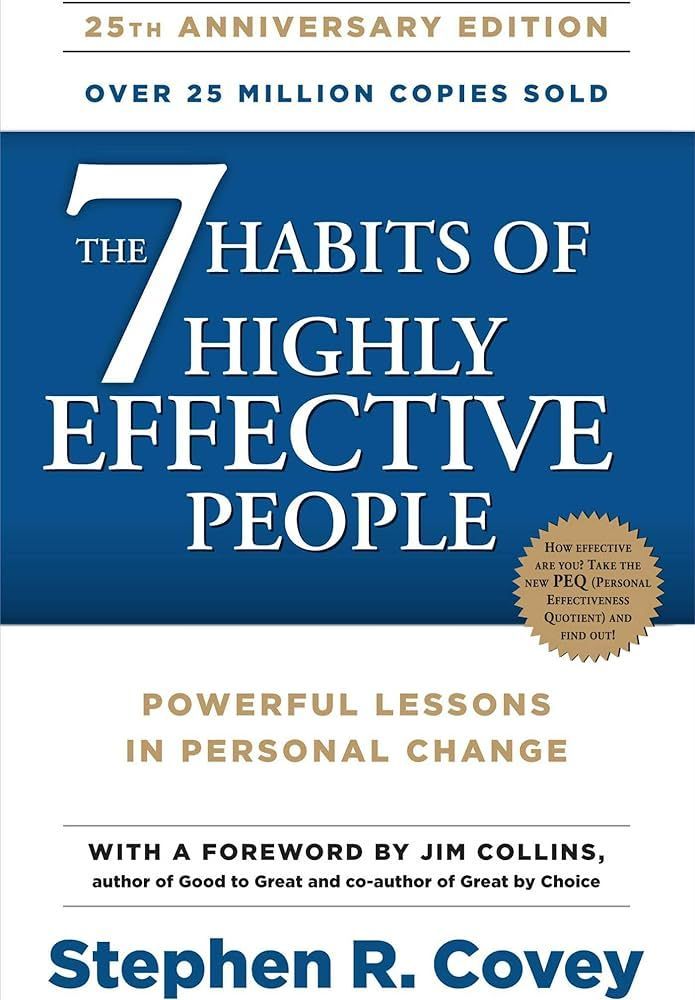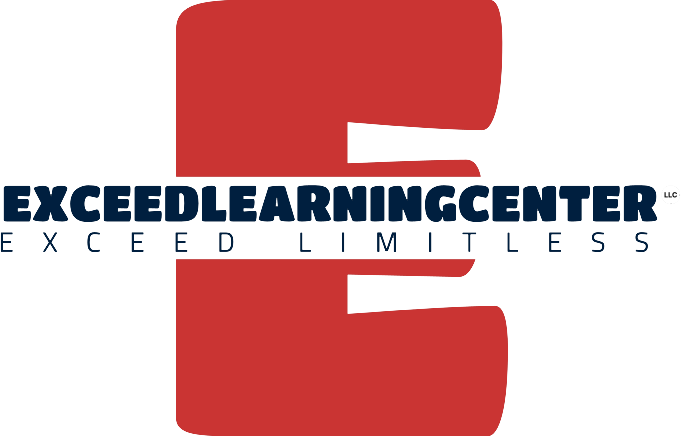Our Resources

Introduction Conflict can be a common part of many workplaces. While conflict can encourage change and inspire new ideas and processes, it's important to know how to negotiate during conflicts. This skill allows you to reach a reasonable outcome among all parties. In this article, we explain what conflict negotiation is, how to negotiate conflicts effectively and what skills you can develop to be a good conflict negotiator. What is conflict negotiation? Conflict negotiation refers to the process of resolving conflicts or disputes between two or more parties through communication, compromise, and finding mutually acceptable solutions. It involves a structured approach to addressing differences and reaching agreements that satisfy the interests and needs of all parties involved. In conflict negotiation, the goal is not to "win" or defeat the other party, but rather to find a resolution that is fair and beneficial to all. It requires active listening, effective communication, empathy, and a willingness to understand and consider different perspectives. Conflict negotiation is a process where parties with differing interests or viewpoints work together to reach a mutually acceptable resolution. It involves communication, compromise, and finding common ground to address and resolve the underlying issues causing the conflict. Common situations that involve handling conflicts in negotiation include: Compensation: Whether setting a salary for a new employee or entering a contract with a vendor, finding a mutually acceptable rate often requires negotiating between differing ideas of fair pay. Common situations that involve handling conflicts in negotiation include: Disputes between employees: Employees may sometimes encounter conflict about responsibilities or work quality. Resolving these concerns through conflict negotiation is a primary duty of many supervisors and managers. Common situations that involve handling conflicts in negotiation include: Disputes between a business and the public: Businesses that serve the public sometimes need to respond to a dissatisfied customer or group of concerned individuals. Common situations that involve handling conflicts in negotiation include: Disagreements during collaboration: Project teams could encounter conflict on factors like how to use limited resources or approach a client request What are the conflict negotiation models? Integrative negotiation or win-win approach In this approach, both parties achieve or exceed their goals in a value-creating process. Both parties look for solutions that benefit each side, integrating the goals into one main approach. An added benefit of this approach is that it creates a positive connection for future negotiations. Distributive negotiation or win-lose approach A distributive negotiation is when only one party can gain benefits. This type of negotiation is common when there's a limited resource or the team can only try one approach. Negotiating a specific price for a product is often distributive negotiation, since there can be only one agreed-upon price. Lose-lose approach In a lose-lose approach, neither party receives the outcome they wanted. In some cases, each side negotiates for part of their desired goal, but they don't get everything they expected. Compromise approach In the compromise approach, both parties attempt to avoid a lose-lose outcome by acknowledging they could benefit from accepting a result that limits negative consequences. Key elements of conflict negotiation Identifying the underlying issues : Understanding the root causes of the conflict and the needs and interests of each party involved. Open and respectful communication : Creating an environment where all parties can express their concerns, needs, and viewpoints without judgment or hostility. Exploring options : Brainstorming and considering various solutions that address the interests of all parties involved. Compromise and collaboration : Finding common ground and working together to reach a mutually acceptable agreement. Implementing and evaluating the agreement : Putting the agreed-upon solution into action and periodically assessing its effectiveness. Skills needed to negotiate conflicts Emotional intelligence Emotional intelligence is the ability to control your own emotions and recognize others' feelings. Being conscious of the emotional dynamics during conflict negotiation can allow you to remain calm and focused on the core issues. If you're unsatisfied with the current negotiation, express the need for a break so you and the other party can return later with refreshed perspectives. Expectation management Just as you should enter a conflict negotiation with a clear goal, the other party also likely has its own defined expectations. If you believe you might not be able to agree to each other's terms, you could try adjusting your own expectations. Skilled expectation management involves maintaining a balance between being a firm negotiator and a collaborative one. Research Performing research can help support your claims and start a foundation for your negotiation. By beginning a negotiation with a fact-driven and open-minded assessment of the issues and sharing useful insights, you and the other party may better understand how the conflict originated and how to solve it. Empathy Empathy allows you to understand the other party's perspective and negotiate toward a win-win approach. This skill is useful for maintaining positive and productive conflict negotiations that produce lasting connections Strategies for resolving conflicts peacefully Effective Communication: Encourage open and honest communication between all parties involved. Actively listen to each other's perspectives and try to understand their point of view. Use "I" statements to express your feelings and avoid blaming or accusing language. Seek clarification and ask questions to ensure clear understanding. Collaboration and Compromise: Foster a collaborative mindset where all parties work together to find a mutually acceptable solution. Brainstorm ideas and explore different options that address the needs and interests of all parties. Be willing to make concessions and find a middle ground through compromise. Mediation: Involve a neutral third party, such as a mediator, to facilitate the resolution process. The mediator helps guide the conversation, ensures fairness, and helps parties find common ground. Mediation can be particularly useful when emotions are high or when there is a power imbalance between parties. Problem-Solving: Approach the conflict as a problem to be solved rather than a battle to be won. Identify the underlying issues and focus on finding practical solutions. Break down the problem into smaller, manageable parts and address them one by one. Empathy and Understanding : Try to put yourself in the other person's shoes and understand their perspective. Show empathy and acknowledge their feelings and concerns. This can help build rapport and create a more cooperative atmosphere. Seek Win-Win Solutions: Look for solutions that benefit all parties involved, rather than a win-lose outcome. Explore creative options that address the interests and needs of everyone. This approach promotes cooperation and long-term relationship building. Recommended Book Getting to Yes: Negotiating Agreement Without Giving In" by Roger Fisher, William Ury, and Bruce Patton

Introduction Time Management is the strategic process of planning, organizing, and prioritizing tasks to optimize the use of available time. It involves setting clear goals, breaking them into manageable steps, and allocating time for each activity. It involves setting clear goals, breaking them into manageable steps, and allocating time for each activity. The Importance of Time Management Effective time management is essential across personal and professional realms, impacting productivity, stress levels, goal attainment, work-life equilibrium, and individual development. This blog delves deeper into the intricacies of why time management holds such significance. Benefits of Effective Time Management Implementing effective time management strategies leads to enhanced productivity, reduced stress, and optimal use of time. For students, mastering time management is crucial. Juggling academic responsibilities, extracurricular activities, and personal commitments requires proper organization and prioritization. Efficiently allocating time to studying, assignment completion, and revision improves learning outcomes, reduces last-minute cramming, and cultivates a healthy work-life balance. Stage 1: Planning It involves: Setting goals: Clear goals are the compass for effective time management. Prioritizing tasks: Eisenhower Matrix. Creating schedule: Put it into action. Start by defining your goals. What do you want to achieve? Identify what is most important to you, and break it down into smaller manageable tasks, and create actional steps. Breaking Down Goals Techniques for task breakdown: SMART criteria: Specific, Measurable, Achievable, Relevant, Time-bound. Mind Mapping: Visualize and connect tasks for a comprehensive plan. Subtasks: Break larger goals into smaller, actionable steps. Next, Prioritize based on importance and urgency. Ask yourself what needs to be done first? What can wait for later? Finally, create a schedule, use a physical or electronical planner. Leave some room for unexpected task, and don’t forget to schedule your breaks! Eisenhower Matrix, Also known as the Urgent-important Matrix. It is a time management tool that helps individuals prioritize tasks based on their urgency and importance. It was popularized by president Dweght D. Eisenhower, who was known got his ability to manage his time effectively. The matrix categorizes tasks into four quadrants: 1. Urgent and Important (Quadrant I): Tasks in this quadrant are both urgent and important. They require immediate attention and are crucial for achieving goals. Examples: Deadline-driven projects, emergencies, crises. 2. Important but Not Urgent (Quadrant II): Tasks in this quadrant are important for long-term goals but not immediately urgent. Focus here is on proactive, preventive, and strategic activities. Examples: Planning, relationship-building, skill development. 3. Urgent but Not Important (Quadrant III): Tasks in this quadrant are urgent but may not contribute significantly to long-term goals. They often involve interruptions and distractions. Examples: Some emails, phone calls, meetings. 4. Not Urgent and Not Important (Quadrant IV): Tasks in this quadrant are neither urgent nor important. These tasks are often time-wasters and should be minimized. Examples: Time on social media, certain trivial activities. How to Use the Eisenhower Matrix: Prioritize Quadrant I: Attend to tasks that are both urgent and important promptly. Invest Time in Quadrant II: Focus on tasks that are important for long-term goals but not immediately urgent. This reduces the number of tasks that become urgent. Delegate or Limit Quadrant III: Address tasks that are urgent but not important, but try to minimize them as much as possible. Avoid Quadrant IV: Minimize tasks that are neither urgent nor important. These are often distractions that don't contribute to your goals. Step 2: Implementation Turning plans into action – the heart of effective time management. Prioritize your tasks based on importance and urgency. Set realistic deadlines for each task. Eliminate distractions as much as possible. Focus on completing your task. Use time blocking techniques to manage your time effectively. Set aside specific blocks of time for different tasks. Don’t forget to take breaks! Stage 3: Evaluation Continuous improvement through reflection and adjustment. Reflect on your goals. Ask yourself if they were realistic. Evaluate if you achieved them, and if anything was in the way. Reflect on your week and month as well. Analyze which strategy helps you most.

Introduction “The 7 Habits of Highly Effective People” "The 7 Habits of Highly Effective People" is a self-help book by Stephen R. Covey that explores principles for personal and interpersonal effectiveness. The book is a classic in the field of personal development and has had a profound impact on readers seeking to improve their lives. It is based on the idea that true success and happiness come from aligning your character with universal principles. "The key to successful living is making small, constructive choices consistently." Our journey begins with understanding the power of habits. Small choices, made consistently, shape our path to success. We'll explore 'The 7 Most Effective Habits of Successful People’ by Stephen Covey. The book is divided into two main sections: Private Victory (Habits 1-3) and Public Victory (Habits 4-7), along with an introduction and concluding thoughts. Private Victory (Habits 1-3): 1. Be Proactive: This habit emphasizes taking responsibility for your own actions and choices. It encourages you to recognize that you have control over your responses to external events and circumstances. Proactive means that as a human being, we are responsible for our own lives. Being proactive means recognizing our responsibility to make things happen. As the book states, “Proactive people focus their effort on their circle of influence, they work on things they can do something about it” – the people and the things they can reach- and spend less energy on their much wider circle of concern. Try this for 30 days: Work only in your smaller circle of influence. Make small commitments to yourself and others, and keep them. Be a light, not a judge; be a model, not a critic; be a solution, not the problem. 2. Begin with the End in Mind : Covey suggests that having a clear vision of your life's goals and values is essential. You should create a personal mission statement to guide your decisions and actions. Know where you are going, so as to understand where you are now, and take the next step in the right direction. This habit encourages us to set clear goals. “Begin with the end in mind means to begin each day, task, or project, with a clear vision of your desired direction and destination” The most effective way to begin with the end in mind is to create a personal mission statement. It should focus on the following: What you want to be (character) What you want to do (contributions and achievements) The values upon which both of these things are based 3. Put First Things First: This habit emphasizes time management and prioritization. It encourages you to focus on the most important and not just the urgent tasks. Covey introduces the concept of the "Time Management Matrix" to help you allocate your time effectively. Question: What one thing could you do – which you aren’t doing now- that if you did regularly, could make a tremendous difference in your business or personal life? This involves self-leadership and self-management: putting first thing first. Putting first things first is about effective prioritization. The book suggests, “Putting first thing first is a whole new way of looking at your time”. We don’t manage time, we can only manage ourselves! Practice of effective self-management through independent will. By asking yourself the above questions, you become aware that you have the power to significantly change your life in the present. To manage your time effectively in accordance with habit three, your actions must adhere to the following: They must be principle-centered. They must be conscience-directed, meaning that they give you the opportunity to organize your life in accordance with your core values. They define your key mission, which adaptations as needed. Public Victory (Habits 4-7): 4. Think Win-Win : Covey argues that success should not come at the expense of others. A win-win mindset seeks mutually beneficial solutions and fosters positive relationships. Thinking win-win is about finding mutually beneficial solutions. 'Win-win is a belief in the third alternative.’” Make an important deposit in another person’s emotional bank account; finding a way both of you can benefit by your interaction. It requires 3 traits: Integrity Maturity Abundance mentality Covey argues that win/win isn't a technique, it's a philosophy of human interaction. It's a frame of mind that seeks out a mutual benefit for all concerned. This means that all agreements or solutions are mutually beneficial, and all parties feel satisfied with the outcome. To embody this mindset, life must be seen as a cooperative, not a competition. Therefore, to adopt a win/win mindset, you must cultivate the habit of interpersonal leadership. This involves exercising each of the following traits when interacting with others: Self-awareness Imagination Conscience Independent will 5. Seek First to Understand, Then to Be Understood: Effective communication is key to relationships. Covey stresses the importance of empathetic listening and trying to understand others before expressing your viewpoint. The most important word to know in mastering this habit is ”listen” Listen to your colleagues, family, friends, customers – but not with the intention to reply, to convince, to manipulate. Listen simply to understand, to see how the other party sees things. This skill develops Empathy. Empathy isn’t Sympathy. 'Most people do not listen with the intent to understand; they listen with the intent to reply.'" An empathic listener can get into the frame of reference of the person speaking. By doing so, they see the world as they do and feel things the way they feel. Empathic listening, therefore, allows you to get a clearer picture of reality. When you begin to listen to people with the intent of understanding them, you'll be astounded at how quickly they will open up. Once you think you've understood the situation, the next step is to make yourself understood. This requires courage. By using what you've learned from empathic listening, you can communicate your ideas in accordance with your listener's paradigms and concerns. This increases the credibility of your ideas, as you will be speaking in the same language as your audience. 6. Synergize: This habit promotes the idea that collaboration and teamwork can lead to better solutions and outcomes. It encourages valuing and leveraging the diversity of opinions and skills within a group. Synergizing is about collaboration for greater success. 'Synergy is better than my way or your way. It's our way.'" 7. Sharpen the Saw : Habit 7 is about self-renewal and self-improvement. Covey emphasizes the need for regular self-care, including physical, mental, emotional, and spiritual renewal, to maintain personal and professional effectiveness. Continuous self improvement in physical, mental, and emotional aspects. “Sharpen the saw means preserving and enhancing the greatest asset you have – you.” Key Takeaways The habits are progressive in nature, though there's no need to perfect one habit before moving on to the next. Each habit sets the foundation for the next level: Dependence => Independence: Habits 1-3 provide your "Private Victories" as you develop your character and self-mastery. Independence => Interdependence: Habits 4-6 shift how you interact with others, to form trusting relationships with healthy emotional bank accounts. These are YOUR "Public Victories" As we wrap up, remember to be proactive, begin with the end in mind, prioritize, seek win-win solutions, practice empathetic communication, synergize, and invest in continuous self-improvement.

Introduction Welcome to our presentation on Effective Study Habits. In this workshop, we will delve into the world of effective study habits and explore the techniques and strategies that can empower you to excel academically. Importance of Effective Study Habits in Academic Success Effective study habits play a pivotal role in achieving academic success. They provide a structured framework for learning and retaining knowledge, leading to better grades and overall educational accomplishments. The Foundation of Effective Studying Effective study habits are the foundation of academic success. They optimize learning, reduce stress, and empower students to achieve their academic goals. These habits include time management, goal setting, active learning, minimizing distractions, and utilizing study resources. Strategy 1: Time Management Time management is the cornerstone of successful studying. It plays a pivotal role in academic achievement for several compelling reasons: Significance of Time Management Optimizing Learning : Effective time management ensures that you make the most of your study time. By allocating your time strategically, you can absorb information more efficiently and with greater comprehension. This means you spend less time studying while achieving better results. Reducing Stress : Without proper time management, students often resort to last-minute cramming. This not only undermines the quality of learning but also leads to stress and anxiety. Time management paves the way for structured, stress-free studying. Resource Allocation : It helps you allocate your most productive hours to studying. This ensures that your peak mental performance coincides with your study sessions, resulting in better retention of information. Goal Achievement : Time management goes hand-in-hand with goal setting. It enables students to break down larger academic goals into manageable tasks and allocate time to work on each task. This process empowers students to track their progress and achieve their objectives. Common Time Management Challenges Students frequently encounter a range of challenges when it comes to managing their time effectively. These challenges can hinder academic success and contribute to stress. Let's explore some common time management obstacles: Procrastination : Procrastination is a notorious time thief. Many students struggle with the tendency to delay important tasks until the last moment. This not only reduces the quality of work but also adds unnecessary stress. Example: Waiting until the night before an exam to study for an entire semester's worth of material. Distractions : In our digital age, distractions are aplenty. Social media, smartphones, and even the environment around us can divert our attention from studying. Example: Constantly checking notifications on your phone instead of focusing on your textbook. Overcommitment : Balancing academics with extracurricular activities, work, and personal life can be challenging. Overcommitment can lead to a lack of time for concentrated, effective studying. Example: Juggling a part-time job, multiple clubs, and a full course load, leaving little time for focused study. Lack of Prioritization : Not knowing which tasks to prioritize can lead to disorganized time management. Without proper prioritization, you may spend excessive time on less important tasks. Example: Spending hours perfecting the formatting of notes instead of understanding the core concepts. Strategy 2: Time-Blocking Time-blocking is a powerful time management technique that can revolutionize the way you approach your study routine. In essence, it involves dividing your day into specific time blocks and dedicating each block to a particular task or activity. Here's a breakdown of this technique: Definition of Time-Blocking: Time-blocking is a structured approach to managing your time. It's like creating a daily or weekly calendar where you allocate specific chunks of time for different activities. This technique helps you stay organized and ensures that you use your time efficiently. Scheduling Specific Time Blocks : In the context of effective studying, you allocate dedicated time blocks for your study sessions. These blocks are carefully chosen based on your peak productivity hours and availability. For instance, you might have a 2-hour time block in the morning for focused reading and note-taking, followed by a 1-hour break. Visual Representation: Time-blocking often involves creating a visual representation of your daily or weekly schedule. This can be done on a physical planner, a digital calendar, or even a simple spreadsheet. By visually mapping out your time blocks, you gain a clear overview of how you're spending your day. Tips for Setting Up a Study Schedule Set Clear Academic Goals : Start by defining your academic goals. What do you want to achieve in your studies? Knowing your objectives helps you tailor your study schedule to meet those goals. Whether it's acing an exam, completing a project, or mastering a subject, your goals provide direction. Prioritize Tasks : Prioritization is essential in time management. Identify the most important tasks and assignments, especially those with impending deadlines. Arrange your schedule so that high-priority items receive dedicated study time. Allocate Specific Time Blocks : One of the key advantages of time-blocking is the allocation of specific time blocks for different tasks. For your study schedule, create focused study time blocks when you're most alert and productive. These blocks should be uninterrupted and dedicated solely to studying. Use Digital or Physical Planners : To aid in organization, consider using digital or physical planners, calendars, or scheduling apps. These tools allow you to create, edit, and view your study schedule easily. You can also set reminders and notifications to keep you on track. Strategy 3: Goal Setting and Planning Setting clear academic goals and creating a structured plan to achieve them is a fundamental aspect of effective time management and successful studying. The Significance of Setting Clear Academic Goals Let's explore the significance of this process. Academic goals provide a sense of purpose and direction in your studies. They serve as motivational targets that drive your learning and help you stay focused. Clear goals make it easier to measure progress and success. When you know what you want to achieve, it's easier to track your journey toward that achievement. Strategy 4: Active Learning Active learning is a dynamic approach to studying that goes beyond passive reading and note-taking. It engages your mind, making study sessions more effective and enjoyable. Strategies for Making the Most of Your Study Sessions Active Recall : active recall involves actively stimulating your memory during study. Instead of simply rereading notes, challenge yourself to recall key points from memory. This enhances retention and understanding. Spaced Repetition : This technique involving the review of material at increasing intervals over time. This strategy is highly effective for long-term retention. Self-Explanation : Explain concepts in your own words. This deepens understanding and helps identify areas that need further study. Practice Testing : Highlight the value of practice tests or self-quizzes. They serve as a self-assessment tool and help identify weak areas. Group Study : Group study is very beneficial to participants. The participants can explain concepts to peers and gain different perspectives. Active learning transforms study sessions into interactive experiences. These strategies allow you to delve deeper into the material, making it easier to understand and remember. Reducing Distractions Effective studying demands a distraction-free environment that allows you to focus and engage with the material. Common Distractions are social media, smartphone notifications, noise, and multitasking. Recognizing these distractions is the first step in managing them effectively. Minimizing Distractions Silence or put away your phone Use website blockers Find a quiet space Time management Utilizing Study Resources Accessing the right study resources is essential for effective learning. Present a range of study resources, including: Textbooks: Discuss the importance of course materials and textbooks. Lecture notes: Emphasize the value of your own class notes or those taken from lectures. Online resources: Mention the abundance of online materials, including articles, videos, and interactive tutorials. Study groups: Highlight the benefits of collaborative learning through study groups. Digital tools: Introduce digital resources like note-taking apps, flashcard apps, and academic websites. How to Select and Maximize Study Materials? Evaluate the relevance of each resource to your learning objectives. Consider the credibility and source of online materials. Prioritize textbooks and lecture notes, ensuring they align with your course content. Experiment with digital tools to find what works best for you. Utilize study groups as a source of peer-generated study materials and diverse perspectives.

Introduction Welcome to our presentation on Overcoming Procrastination: Practical Strategies. In this session, our goal is to provide practical strategies for overcoming procrastination, a common obstacle to effective problem solving. The Problem Why do we procrastinate, even though we know it’s against our best interests? One of the first things I learned was that procrastination is a human condition. As for the phenomenon of putting stuff off, it’s “a purely visceral, emotional reaction to something we don’t want to do,” says Tim Pychyl, author of Solving the Procrastination Puzzle . Practical Strategies Now, let's get into the heart of the matter: practical strategies to overcome procrastination. We all face those moments where we'd rather put things off, but there are effective ways to conquer this common hurdle. One of the important strategies involves time management. Strategy 1: Time Management Time management techniques is cornerstone of beating procrastination. One such technique is known as the Pomodoro Technique. The Pomodoro Technique is a time management method developed by Francesco Cirillo in the late 1980s. It's a highly effective way to boost productivity and overcome procrastination. The Pomodoro Technique: Choose a Task: Start by selecting the task you want to work on. It could be anything, from studying for an exam to completing a work project or even household chores. Set a Timer: Set a timer for a fixed duration, traditionally 25 minutes, which is known as a "Pomodoro." (The name "Pomodoro" comes from the Italian word for tomato, as Cirillo originally used a tomato - shaped kitchen timer.) Work Intensely: Now, you focus on your chosen task with utmost concentration until the timer rings. During this 25-minute interval, eliminate all distractions and immerse yourself in the work. Take a Short Break: When the timer goes off, you take a short 5-minute break. This is a time to step away from your work, relax, stretch, or do anything other than the task at hand. Repeat and Take Longer Breaks: After completing four Pomodoros (i.e., four cycles of 25 minutes of work followed by 5-minute breaks), you take a longer break, typically around 15-30 minutes. This longer break allows you to recharge. Strategy 2: Breaking Down Complex Tasks. Now, let's explore the second practical strategy for overcoming procrastination - breaking down complex tasks into smaller, more achievable steps. Imagine you're faced with a research project, something that seems large and daunting, something that can easily lead to procrastination. This is where the value of breaking it down comes into play. If you view the project as a single, massive undertaking, it can feel overwhelming. It's like staring at the summit of a towering mountain. But when you break it into smaller steps, it's like viewing the same mountain one foothill at a time. It becomes much more manageable. Strategy 3: Setting Clear and Achievable Goals. Another effective strategy in combating procrastination is setting clear and achievable goals. The importance of this cannot be overstated. Imagine you have a vague goal, something like "study for a test." It's a common aspiration, but it's not as effective as it could be. Why? Because it lacks specificity. It's like having a compass but no map. You know the general direction, but you're missing the roadmap. This is where clear and achievable goals come into play. They're like a well-drawn map guiding you to your destination. For instance, consider this goal: "I will complete Chapter 3 exercises in my math textbook by 6:00 PM today." When you set such clear goals, you know precisely what's expected, and you're more likely to hold yourself accountable. There's no room for vague intentions or the ambiguity that can lead to procrastination. Instead, there's a defined objective. Moreover, these clear goals provide motivation. They serve as a constant reminder of what needs to be accomplished. It's like having a target in your sights, which can be incredibly motivating. So, remember, setting clear and achievable goals is like having a detailed map for your journey. It eliminates ambiguity, provides a roadmap, and offers motivation. It's an essential tool in tackling tasks head-on and ensuring that procrastination takes a back seat. Tools and Resources Task Management Tools : Task management tools like Todoist, Wunderlist, or Microsoft To-Do can help you organize and prioritize your tasks. It is very important to break tasks into smaller steps and track progress. Todoist : Simple project management tool that offers several core features to help user stay organized and on top of their workload. Microsoft To Do : The best way to create a to do list on your phone. Can sink across multiple devices. Apps for Focus and Productivity: Some apps are designed to enhance focus and productivity, such as Focus@Will, Forest, or Freedom. These apps can help you minimize distractions, stay on task, and increase your productivity. Focus@Will : Subscription-based platform which is full of music, which was written designed to help increase your focus and concentration. Freedom : Create custom Block lists. Forest : Plant trees by being productive in your work. Tools and Resources These tools can serve as valuable allies in your fight against procrastination. They provide structure, help you manage your time effectively, and encourage focus.

Introduction: Welcome to our presentation on Effective Note-Taking Techniques. In this session, we'll explore the importance of these techniques, and the common problems students face. Imagine a world where your study sessions are not only productive but also enjoyable. Picture a scenario where you grasp complex concepts faster, retain information longer, and achieve better grades with less effort. That world is not a distant dream; it's within your reach through the power of effective study techniques. The Problem The rate of decline in effective study habits: In schools and colleges, many students find themselves overwhelmed, struggling to keep up with the rapid pace of lectures and assignments. Even beyond the educational system, adults often face the challenge of acquiring new skills or staying up to date in their professions. Consequences: stress, anxiety, and poor performance Overview of Note-Taking Methods The Three Effective Note-Taking Methods: The Cornell Method: The Cornell Method is a popular note-taking system designed to help students organize and review their notes effectively. It was developed by Walter Pauk at Cornell University. Here's an overview of the Cornell Method: Divide Your Paper into three sections: a narrow left-hand column (about 2.5 inches wide), a wider right-hand column, and a section at the bottom. Taking Notes during a lecture or while reading. Use the right-hand column to take your primary notes. Cues/Questions: After the lecture or reading, use the left-hand column to create cues or questions based on your notes. Summary: In the bottom section, write a summary of the main ideas and key points. Review: When you study, cover the right-hand column (your main notes) and use the cues/questions in the left-hand column to test your knowledge and prompt your memory. Then, reveal the notes to check your understanding. The Mapping Method The Mapping Method is a visual note-taking technique that helps you create a spatial representation of information Visual Representation: The Mapping Method involves creating a visual "map" of information. Branches and Subtopics: From the central idea, you draw branches outward to represent subtopics or key points related to the main idea. Hierarchy: Create a hierarchy of information by using lines and connectors to show the relationships between main ideas and subtopics. Keywords and Icons: Use keywords, icons, and symbols to represent information concisely. Color and Visual Aids: You can use color coding and visual aids like images, charts, and diagrams to enhance the clarity and memorability of your map. The Outline/Bullet Point Method The Outline or Bullet Point Method is a straightforward way to organize information using lists Hierarchy of Information: The outline method organizes information in a hierarchical structure. You start with a main topic or heading, followed by subtopics, and further sub-subtopics if needed. Bullet Points: Under each heading or subheading, you use bullet points or numbers to list key points, details, or ideas related to that section. Indentation: To indicate the hierarchy, you use indentation. Main topics are flush with the left margin, subtopics are indented slightly, and subpoints are indented further. Conciseness: Bullet points should be concise and focus on the main ideas. Avoid lengthy sentences; use short phrases or keywords. Easy to Scan: The outline method makes it easy to scan and locate information quickly. It's an effective way to summarize and review complex topics. How to Implement in Your Life Now that you're familiar with these note-taking methods, here's how to integrate them into your daily life. For the Cornell Method: Use it in class for lecture notes. Review and summarize notes regularly. Experiment with variations, like digital tools. For the Mapping Method: Use it for brainstorming and organizing ideas. Practice creating clear visual representations. Explore digital mind-mapping tools. For the Outline/Bullet Point Method: Use it for structuring documents and reports. Keep bullet points concise and focused. Experiment with software that supports outlining.

Introduction In our journey through emotional intelligence, we've explored self-awareness, self-management, and social awareness. Now, we arrive at the cornerstone of meaningful human interaction: relationship management. Relationship management encompasses the skills and abilities needed to foster positive, constructive connections with others. It's about navigating the intricate dance of human interaction, from empathy and active listening to conflict resolution and collaboration. What is Relationship Management? Relationship management within the context of emotional intelligence refers to the ability to effectively navigate and nurture interpersonal connections with others. Relationship management encompasses both personal and professional relationships, emphasizing the importance of empathy, active listening, and effective communication in fostering mutual understanding and respect. Importance of Empathy in Building Strong Relationships Empathy serves as a cornerstone in building strong, meaningful relationships. Here's why it's crucial: Understanding : Empathy allows us to understand others' emotions, perspectives, and experiences. Connection : When we empathize with others, we show them that we care and value their experiences Conflict Resolution : Empathy plays a vital role in resolving conflicts. Communication : Empathy enhances communication by facilitating active listening and genuine understanding. Tips for Developing Empathy Practice Active Listening : Focus on truly listening to others without judgment or interruption. Put Yourself in Their Shoes : Take the time to imagine how the other person might be feeling and why. Ask Open-Ended Questions : Demonstrate genuine interest in others by asking about their experiences, opinions, and feelings. Show Genuine Interest : Demonstrate genuine interest in others by asking about their experiences, opinions, and feelings. Practice Empathetic Language : Use empathetic language that conveys understanding and support. Reflect on Your Own Experiences : Reflect on your own emotions and experiences to cultivate empathy towards others. Explanation of Active Listening Active listening is a communication technique that involves fully engaging with the speaker, focusing on understanding their message, and providing feedback to demonstrate understanding. It goes beyond simply hearing words; it involves paying attention to verbal and nonverbal cues, empathizing with the speaker's emotions, and responding in a way that shows genuine interest and comprehension. Techniques for Practicing Active Listening in Interactions Give Your Full Attention : When someone is speaking to you, eliminate distractions and give them your undivided attention. Paraphrase and Summarize : Throughout the conversation, paraphrase the speaker's main points and summarize what they've said to demonstrate understanding. Ask Clarifying Questions : If there's something you don't understand or need clarification on, don't hesitate to ask questions. Reflect Emotions : Pay attention to the speaker's tone of voice, body language, and emotional cues. Avoid Interrupting : Resist the urge to interrupt or interject with your own thoughts and opinions. Provide Encouragement : Offer words of encouragement and support to the speaker to create a safe and open environment for communication. Be Patient and Nonjudgmental : Listen without judging or jumping to conclusions. Use Positive Body Language : Use open body language to convey warmth and receptiveness. Conflict Resolution Strategies for Resolving Conflicts Constructively: Understand the Root Cause : Take the time to understand the underlying reasons behind the conflict. Active Listening : Practice active listening to fully understand the other person's viewpoint. Effective Communication : Clearly express your own thoughts, feelings, and concerns in a calm and respectful manner. Empathy and Perspective-Taking : Put yourself in the other person's shoes and try to understand their perspective. Focus on Solutions, Not Blame : Shift the focus from assigning blame to finding mutually acceptable solutions. Seek Common Ground : Identify common goals or interests that you share with the other person. Use "I" Language : Avoid accusatory language and instead use "I" statements to express your feelings and needs. Practice Assertiveness : Assertively communicate your boundaries, needs, and expectations while respecting the other person's boundaries as well. Take Breaks When Necessary : If emotions are running high or the conversation becomes too heated, it's okay to take a break and revisit the discussion when both parties are calmer and more composed. Focus on Long-Term Solutions : Keep the bigger picture in mind and aim for long-term solutions that address the underlying issues rather than temporary fixes. Overview of Effective Communication Skills Effective communication is essential for building strong relationships, resolving conflicts, and achieving mutual understanding. Here's an overview of key communication skills: Assertiveness : Assertiveness involves expressing your thoughts, feelings, and needs in a clear and direct manner while respecting the rights and boundaries of others. Clarity : Clarity in communication means expressing yourself in a concise, understandable, and straightforward manner. Nonverbal Communication : Nonverbal communication includes body language, facial expressions, gestures, tone of voice, and eye contact. Emphasizing Key Elements for Building and Maintaining Strong and Supportive Relationships Communication : Effective communication lies at the heart of any strong relationship. Trust : Trust forms the foundation of any healthy relationship. Empathy : Empathy is the ability to understand and share the feelings of others. Respect : Respect is essential for fostering mutual admiration, dignity, and consideration in relationships Compromise : Healthy relationships require a willingness to compromise and find mutually acceptable solutions to conflicts or disagreements. Support : Offer support and encouragement to those you care about during both times of joy and times of hardship. Boundaries : Establishing and respecting boundaries is essential for maintaining healthy and respectful relationships

Introduction Emotional Intelligence (EI) refers to the ability to recognize, understand, and manage one's own emotions, as well as the ability to recognize, understand, and influence the emotions of others. Self-awareness is the foundation of emotional intelligence (EI), serving as the first component in the EI framework. What is Self-Awareness? Self-awareness is the ability to recognize and understand one's own emotions, thoughts, values, strengths, and weaknesses. It involves being aware of how our emotions and behaviors impact ourselves and others. Self-awareness is essential for both personal and professional growth as it enables individuals to understand themselves more fully. In personal growth, self-awareness allows individuals to identify their values, beliefs, and goals, leading to greater clarity and purpose in life. It helps individuals recognize their strengths and weaknesses, facilitating targeted efforts for self-improvement and skill development. In professional growth, self-awareness enhances leadership effectiveness, communication skills, and decision-making abilities. It fosters empathy and understanding in interpersonal relationships, leading to stronger collaboration and teamwork. Overall, self-awareness is a key predictor of success and fulfillment in both personal and professional domains. Techniques for Recognizing and Understanding Emotions Self-Reflection Exercises Journaling Prompts Mindfulness Practices Role-Playing Scenarios Self-reflection exercises Daily Emotion Check-In Trigger Identification Emotional Journaling Values Assessment Gratitude Practice Self Reflection Sample Example Entry: Date: April 15, 2024 Emotion(s) Felt: Anxiety, Overwhelm Trigger(s): Received a challenging work assignment with a tight deadline Physical Sensations: Tightness in chest, racing thoughts, difficulty focusing Insights/Lessons Learned: Recognized the importance of setting boundaries and managing workload effectively Healthy Response: Practiced deep breathing and prioritized tasks to manage stress and break down the assignment into manageable steps. Journaling Prompts Prompts for Journaling about Emotions and Weaknesses: Emotions : Describe a recent situation that evoked strong emotions in you. What specific emotions did you experience during this situation? How did you express or manage these emotions? Weaknesses : Identify an area of challenge or difficulty you've encountered recently. What weaknesses or limitations did you perceive in this situation? How can you work to overcome or address these weaknesses? Prompt: Reflect on a recent interaction with someone that left a strong impression on you. Instructions: Describe the interaction in detail, including the context, participants involved, and the nature of the conversation. Identify the emotions you experienced during the interaction. Were you feeling happy, sad, frustrated, or another emotion? Explore the reasons behind these emotions. What aspects of the interaction triggered your emotional response? Consider how you expressed or managed these emotions during the interaction. Did you communicate openly, or did you suppress your emotions? Reflect on any insights or lessons learned from the interaction. What did you learn about yourself, the other person, or the dynamics of the relationship? Finally, brainstorm ways to apply these insights to future interactions and improve your communication skills and emotional intelligence. Mindfulness Practices Mindfulness is the practice of intentionally bringing one's attention to the present moment without judgment. It involves being fully engaged in the present experience, with a heightened awareness of thoughts, feelings, bodily sensations, and the surrounding environment. Benefits of mindfulness for self-awareness Increased Self-Reflection Enhanced Emotional Awareness Improved Self-Regulation Greater Clarity of Thought Enhanced Self-Acceptance Deeper Understanding of Values and Priorities Role-playing Reflection on Personal Experience Identification of Emotional Responses Recognition of Behavioral Patterns Analysis of Communication Dynamics Exploration of Self-Awareness Insights Application to Real-Life Situations

Introduction Emotional Intelligence (EI) is the ability to recognize, understand, and manage our own emotions, as well as those of others. In both personal and professional contexts, EI plays a crucial role in our relationships, decision-making, and overall well-being. Understanding the Four Components of EI Self-awareness : Recognizing emotions and their impact: This component involves recognizing and understanding our own emotions, strengths, weaknesses, values, and goals. By being self-aware, we can better navigate our emotions and make informed decisions that align with our values and aspirations. Self-management : Regulating emotions and behaviors: Self-management refers to the ability to regulate and control our emotions, impulses, and behaviors in different situations. It involves techniques such as stress management, resilience, adaptability, and impulse control. With effective self-management, we can handle challenges calmly, stay focused on our goals, and maintain a positive attitude. Social awareness : Understanding others' emotions and perspectives: Social awareness entails being attuned to the emotions, needs, and perspectives of others. It involves empathy, compassion, and understanding social cues. By developing social awareness, we can build stronger connections, communicate effectively, and navigate social interactions with sensitivity and respect. Relationship management : Building and maintaining healthy connections. Relationship management is about building and maintaining healthy, productive relationships with others. It involves skills such as communication, conflict resolution, collaboration, and influence. By practicing effective relationship management, we can foster trust, cooperation, and mutual support in our personal and professional relationships. Understanding the Four Components of Emotional Intelligence (EI) By understanding and cultivating these four components of EI, we can enhance our interpersonal skills, navigate social dynamics more effectively, and achieve greater success and satisfaction in both our personal and professional lives. Practical Strategies for Developing Emotional Intelligence (EI) Skills: Mindfulness and self-reflection : Engage in mindfulness practices such as meditation, deep breathing exercises, or journaling to increase self-awareness and regulate emotions. Emotional journaling : Keep a journal to track your emotions, triggers, and reactions throughout the day. Reflect on patterns and identify strategies for managing challenging emotions. Role-playing and scenario analysis : Practice empathetic listening and perspective-taking by role-playing different scenarios with friends or colleagues. Analyze the emotions and motivations of various characters to broaden your understanding. Active listening exercises : Practice active listening by focusing your attention fully on the speaker without interrupting or judging. Reflect on what they've said to ensure understanding and build rapport. Feedback solicitation : Seek feedback from trusted friends, mentors, or colleagues about your emotional responses and communication style. Use constructive feedback as an opportunity for growth and self-improvement. Stress management techniques : Learn and practice stress reduction techniques such as deep breathing, progressive muscle relaxation, or visualization to better manage stress and maintain emotional balance. Conflict resolution workshops : Attend workshops or training sessions on conflict resolution to learn effective communication techniques, negotiation skills, and strategies for resolving conflicts in a constructive manner. Empathy-building exercises : Engage in activities that promote empathy, such as volunteering, joining diverse social groups, or participating in cultural exchange programs to broaden your perspective and understanding of others' experiences. Emotional regulation strategies : Identify healthy coping mechanisms for managing difficult emotions, such as exercise, creative expression, or seeking support from friends or a therapist. Continuous learning : Stay informed about the latest research and developments in emotional intelligence by reading books, attending seminars, or taking online courses to deepen your understanding and refine your skills. Real-life examples and scenarios for application Real-life examples and scenarios for applying emotional intelligence skills in various contexts: Workplace conflict resolution Customer service interaction Family Disagreement Networking Event Conversation Performance review Discussion Conflict with a friend Leadership Challenge. Interactive Exercises and Self-Assessment Quizzes Emotional Wheel Activity Empathy Role Playing Self-Reflecting Journaling

Introduction Emotional Intelligence (EI) is the ability to recognize, understand, and manage our own emotions, as well as those of others. In both personal and professional contexts, EI plays a crucial role in our relationships, decision-making, and overall well-being. Understanding the Four Components of EI Self-awareness: Recognizing emotions and their impact: This component involves recognizing and understanding our own emotions, strengths, weaknesses, values, and goals. By being self-aware, we can better navigate our emotions and make informed decisions that align with our values and aspirations. Self-management: Regulating emotions and behaviors Self-management refers to the ability to regulate and control our emotions, impulses, and behaviors in different situations. It involves techniques such as stress management, resilience, adaptability, and impulse control. With effective self-management, we can handle challenges calmly, stay focused on our goals, and maintain a positive attitude. Understanding the Four Components of EI Social awareness : Understanding others' emotions and perspectives Social awareness entails being attuned to the emotions, needs, and perspectives of others. It involves empathy, compassion, and understanding social cues. By developing social awareness, we can build stronger connections, communicate effectively, and navigate social interactions with sensitivity and respect. Relationship management : Building and maintaining healthy connections. Relationship management is about building and maintaining healthy, productive relationships with others. It involves skills such as communication, conflict resolution, collaboration, and influence. By practicing effective relationship management, we can foster trust, cooperation, and mutual support in our personal and professional relationships Practical Strategies for Developing EI Skills Mindfulness and self-reflection : Engage in mindfulness practices such as meditation, deep breathing exercises, or journaling to increase self-awareness and regulate emotions. Emotional journaling : Keep a journal to track your emotions, triggers, and reactions throughout the day. Reflect on patterns and identify strategies for managing challenging emotions. Role-playing and scenario analysis : Practice empathetic listening and perspective-taking by role-playing different scenarios with friends or colleagues. Analyze the emotions and motivations of various characters to broaden your understanding. Active listening exercises : Practice active listening by focusing your attention fully on the speaker without interrupting or judging. Reflect back on what they've said to ensure understanding and build rapport. Feedback solicitation : Seek feedback from trusted friends, mentors, or colleagues about your emotional responses and communication style. Use constructive feedback as an opportunity for growth and self-improvement. Stress management techniques : Learn and practice stress reduction techniques such as deep breathing, progressive muscle relaxation, or visualization to better manage stress and maintain emotional balance. Conflict resolution workshops : Attend workshops or training sessions on conflict resolution to learn effective communication techniques, negotiation skills, and strategies for resolving conflicts in a constructive manner. Empathy-building exercises : Engage in activities that promote empathy, such as volunteering, joining diverse social groups, or participating in cultural exchange programs to broaden your perspective and understanding of others' experiences. Emotional regulation strategies : Identify healthy coping mechanisms for managing difficult emotions, such as exercise, creative expression, or seeking support from friends or a therapist. Continuous learning : Stay informed about the latest research and developments in emotional intelligence by reading books, attending seminars, or taking online courses to deepen your understanding and refine your skills.

Cultivating a Healthy Mind-Body Connection. In a world filled with constant stimulation and distractions, it's easy to overlook the importance of nurturing our minds and maintaining a healthy balance between intellect and well-being. However, by embracing our potential and prioritizing our intellectual wellness, we can unlock a wealth of benefits, from enhanced cognitive function to greater emotional resilience. Engage in Introspective Reflection Take a moment to explore your inner thoughts, feelings, and aspirations. Reflect on your strengths, passions, and areas for growth. Consider how nurturing your intellectual wellness can enhance your overall well-being. Importance of Self-Awareness Self-awareness enhances decision-making by helping individuals align their actions with their values and goals. It fosters stronger interpersonal relationships by promoting empathy and effective communication. Self-awareness facilitates personal growth and development by enabling individuals to identify areas for improvement and leverage their strengths. Setting SMART Goals: Mapping out your path to success Specific : Clearly define your goals with specific objectives and outcomes. Measurable : Establish criteria to measure progress and track success.” Achievable : Set goals that are realistic and attainable within your capabilities and resources.” Relevant : Ensure that your goals align with your values, priorities, and long-term aspirations. Time-Bound : Assign deadlines and milestones to create a sense of urgency and accountability. Overcoming Limiting Beliefs and Self-Doubt Limiting Beliefs : Negative beliefs or perceptions about oneself, others, or the world that hinder personal growth and success. Self-Doubt : Lack of confidence or belief in one's abilities, leading to hesitation, fear of failure, and reluctance to take action. Fear of Failure: Belief that failure is unacceptable or indicative of personal inadequacy, leading to avoidance of challenges or risks. Imposter Syndrome : Feeling of being a fraud or undeserving of success, despite evidence of competence or achievement. Perfectionism : Unrealistic pursuit of flawlessness, resulting in self-criticism, procrastination, and reluctance to take risks. Comparison Trap : Constantly measuring oneself against others and feeling inadequate or inferior as a result All-or-Nothing Thinking : Viewing situations in extreme black-and-white terms, leading to unrealistic expectations and disappointment Impact of Limiting Beliefs Undermines confidence and self-esteem, hindering personal and professional growth. Stifles creativity and innovation by limiting willingness to take risks or explore new opportunities. Creates self-imposed barriers to success, preventing individuals from reaching their full potential. Cultivating a Growth Mindset: Embracing Challenges and Learning Opportunities Growth Mindset : Belief that abilities and intelligence can be developed through dedication, effort, and learning. Embrace Challenges : View challenges as opportunities for growth and learning, rather than threats or obstacles. Persist in the Face of Setbacks : Maintain resilience and perseverance in the face of failure or setbacks, recognizing them as temporary setbacks on the path to success. Learn from Feedback : Seek feedback and constructive criticism as opportunities for improvement and development. Be Inspired by Others' Success : Rather than feeling threatened by others' achievements, be inspired by their success and see it as evidence of what is possible. Benefits Increased resilience and adaptability in the face of adversity. Greater willingness to take risks and pursue challenging goals. Continuous growth and improvement in skills and abilities. Understanding Growth Mindset vs. Fixed Mindset Growth Mindset : Belief that abilities and intelligence can be developed through dedication, effort, and learning. Individuals with a growth mindset embrace challenges, persist in the face of setbacks, and see failure as an opportunity for growth. Fixed Mindset: Belief that abilities and intelligence are static and cannot be changed. Individuals with a fixed mindset avoid challenges, give up easily in the face of setbacks, and view failure as evidence of their limitations. Benefits of Adopting a Growth Mindset According to research by Carol Dweck and her colleagues, individuals with a growth mindset are more likely to embrace challenges, persist in the face of setbacks, and achieve greater academic and professional success. Time Management Strategies for Productivity and Balance Prioritize Tasks : Identify and focus on high-priority tasks that align with your goals and values. Use Time Blocking : Allocate specific blocks of time for different tasks or activities, minimizing distractions and improving focus. Set SMART Goals : Establish clear, measurable goals with deadlines to create a sense of urgency and accountability. Practice the 2-Minute Rule : Tackle small tasks or decisions immediately if they can be completed in two minutes or less, reducing procrastination and overwhelm. Use the Pomodoro Technique : Break work into short, focused intervals (typically 25 minutes) followed by short breaks to maintain productivity and avoid burnout. Benefits Increased productivity and efficiency in completing tasks and achieving goals. Greater sense of control and reduced stress from effectively managing time and priorities. Improved Work-life balance by allocating time for both work and personal activities. Overcoming Time Management Challenges Procrastination : Avoiding tasks or delaying action, often due to fear, perfectionism, or lack of motivation Multitasking : Attempting to juggle multiple tasks simultaneously, leading to decreased productivity and increased errors. Set Clear Goals and Priorities : Define clear objectives and prioritize tasks based on their importance and urgency. Break Tasks into Smaller Steps : Divide larger tasks into smaller, manageable steps to avoid feeling overwhelmed. Building Resilience: Bouncing back from Setbacks Resilience : The ability to adapt and bounce back in the face of adversity, setbacks, or challenges. Acceptance : Acknowledge and accept the reality of the situation, including any emotions or feelings that arise. Optimism : Maintain a positive outlook and focus on potential solutions and opportunities for growth. Resilience : The ability to adapt and bounce back in the face of adversity, setbacks, or challenges. Acceptance : Acknowledge and accept the reality of the situation, including any emotions or feelings that arise. Optimism : Maintain a positive outlook and focus on potential solutions and opportunities for growth. Strategies for Building Resilience: Cultivate a Growth Mindset : Embrace challenges as opportunities for learning and growth, rather than insurmountable obstacles. Practice Mindfulness : Stay present and grounded in the present moment, reducing stress and promoting emotional regulation. Seek Support : Reach out to friends, family, or professional support networks for guidance, encouragement, and perspective. Learn from Setbacks : Reflect on lessons learned from past setbacks, using them as opportunities for personal and professional development. Benefits Increased ability to cope with stress and adversity Greater emotional resilience and well-being. Improved problem-solving skills and adaptability.

Introduction Memory is a fascinating aspect of human cognition. It’s not just about remembering facts and figures; memory shapes our identities, influences our decision-making, and enables us to learn and adapt. Whether you’re a student preparing for exams, a professional aiming to excel in your career, or simply someone who wants to enhance their cognitive abilities, improving your memory power can be a game-changer. Why Do We Forget? All information passes through sensory memory, short term memory, and long-term memory. Sensory Memory : Retain impressions of sensory information. Short Term Memory : Capacity for holding a small amount of information. Available for a short period of time. Long Term Memory : Memory that can last as little as a few days, and as long as decades. ` Recall Vs. Recognition Recall : you must retrieve the information from memory (like short response test). Recognition : you must identify the target from possible targets (MC Test) Ways to Improve Memory Capabilities: Brain Tricks : Memory enhancement encompasses a spectrum of strategies, from the intricate to the straightforward. While some methods demand a certain degree of expertise, others are easily adoptable Flashcards: Employing flashcards can significantly boost your ability to remember information. These cards feature details on one side and corresponding facts on the other, making it easier to reinforce your memory. The Importance of Sleep : Memory enhancement is intricately linked to sleep quality, often overlooked but crucial for optimal memory performance. Exercise for the Brain : Exercise not only visibly enhances physical health but also bolsters cognitive abilities by significantly increasing blood flow to the brain. Activities like high-intensity interval workouts and those requiring hand-eye coordination are especially effective. Eat Right : The saying ‘you are what you eat’ extends its influence to your brain and, consequently, your memory. Nutritionists have long advocated the importance of a healthy breakfast for improved exam performance. Foods high in saturated fats, such as heavily processed items, red meat, and butter, should be avoided, as they can negatively affect brain function. Train your Brain : A good memory is not just an inherent skill possessed by a select few; it’s akin to our physical muscles that can be trained, nurtured, and honed. Various programs are available that focus on a holistic approach to enhancing an individual’s memory capabilities by refining cognitive skills and brain function through effective brain training systems. It’s advisable to seek expert guidance in memory training and to participate in structured programs specifically designed to challenge and bolster memory. Brain boost Activities Check Out Your Neighborhood Check out Your Refrigerator What’s the Opposite (Antonyms) The dictionary describes antonym as a word opposite in meaning to another, such as short and long, big and little, white and black. This activity may take some creative thinking. It also a good way to promote verbal skills as it helps with word retrieval - recalling words. Some Healthy Food Recipes: Blueberry Pancakes for breakfast? The are high in fiber and calcium and make a great brain-boosting breakfast, thanks to the blueberries. 1 cup of almond flour. ½ cup tapioca or arrowroot flour 1 ½ teaspoons aluminum-free baking powder 1-2 cups fresh or frozen Blueberries 1 egg 1 cup soy milk 1 tablespoon raw sugar In a medium bowl, mix the flours, baking powder, and sugar. Add the egg and soy milk and whisk until combined. In a medium skillet over medium heat, melt the coconut oil. Pour or scoop the pancake batter into the skillet. Cook for 2 to 3 minutes. After most of the bubbles break, flip the pancakes and cook the other sides for 2 minutes longer. Serve immediately. Top with the blueberries. Or perhaps some refreshing ginger lemonade? Ginger has an anti-inflammatory compound known as gingerols, which are as delicious as they are healing. The lemonade wont cause blood sugar fluctuations. 5 lemons 1 piece fresh ginger (about 3’’) 1 ½ teaspoons liquid stevia 6 cups of water ice cubes 1 sprig fresh mint (optional) Juice the lemons using a ceramic or wooden reamer (or an electric citrus juicer if you have one). Pour the juice into a large pitcher. Juice the ginger and add the juice to the pitcher. Add the stevia and pour in the water. Stir to mix. Pour over ice and add the mint sprig, if using, to garnish. Paul Fessa Exercise Point feet straight ahead, and spread them apart. About shoulder width. Grab your right earlobe with the thumb and finger of your left hand. * Cross over your left arm and do the same using your right hand on the left earlobe Squat as fully as you can, breathing in. Then breathe out as you stand. Continue this for 1 minute up to 3 minutes. Do this daily.

Introduction Intellectual growth is essential for personal development and navigating the complexities of the world around us. Literature plays a crucial role in stimulating intellect by offering diverse perspectives, sparking critical thinking, and fostering empathy. Through literature, we can explore new ideas, challenge our assumptions, and broaden our understanding of humanity and the world we inhabit. Importance of Brain Health The brain is the control center of the body, responsible for cognitive functions, emotions, and behaviors. Optimal brain health is essential for overall well-being and quality of life. Effects of Poor Brain Health Impaired cognitive function: memory loss, decreased attention span, difficulty problem-solving. Impact on mental health: increased risk of depression, anxiety, and other mood disorders. Reduced quality of life: challenges in daily activities, social interactions, and productivity. Lifestyle Factors Lifestyle Factors such as diet, exercise, sleep, and stress management in promoting brain health and cognitive function. Cognitive Activities Engage in mentally stimulating activities such as puzzles, reading, learning new skills, and social interaction to maintain cognitive function. Physical Exercise Exploring the connection between physical activity and cognitive function, including the impact of exercise on brain structure, neuroplasticity, and the prevention of cognitive decline. Mindfulness and Mental Health Discussing the benefits of mindfulness practices, meditation, and stress reduction techniques in promoting brain health, emotional well-being, and cognitive resilience.

Introduction Continuous learning and skill development are crucial for achieving personal and professional goals. In a rapidly evolving world, acquiring new skills ensures adaptability, boosts confidence, and opens doors to diverse opportunities. Embracing a mindset of lifelong learning enhances one's ability to navigate challenges and stay relevant in today's dynamic environment. Understanding Skills Success in various fields often requires a combination of essential skills. These include effective communication, critical thinking, adaptability, time management, collaboration, and a strong work ethic. Technical proficiency, leadership, problem-solving, and creativity are also highly valued, depending on the specific field. Developing a well-rounded skill set equips individuals to excel in diverse professional environments. Hard Skills vs. Soft Skills Achieving success hinges on a balance of hard skills, which are specific and teachable abilities relevant to a particular job or industry, and soft skills, encompassing communication, adaptability, and interpersonal abilities. While hard skills provide the foundation, soft skills are vital for effective collaboration, leadership, and navigating the complexities of professional relationships. A harmonious integration of both sets of skills maximizes an individual's potential for success in their chosen endeavors. What’s Your Skill? Take a moment to assess your current skill set. Reflect on experiences where you excelled and times you faced challenges. Identify patterns in the skills that contributed to your success and areas where improvement is possible. Seek feedback from peers or mentors to gain external perspectives. Utilize self-assessment tools or career resources to pinpoint strengths and weaknesses. Set Skill-Related Goals When setting skill-related goals, start by identifying areas crucial to your personal and professional growth. Be specific about the skills you want to acquire or improve. Break down larger goals into smaller, achievable milestones. Set a realistic timeline for each goal, considering the time and effort required. Align your goals with your broader objectives, ensuring they contribute meaningfully to your success. Learning Platforms and Resources For online courses and workshops, platforms like Coursera, Udacity, and LinkedIn Learning offer a wide range of subjects. Books like "Atomic Habits" by James Clear and "Mindset: The New Psychology of Success" by Carol S. Dweck provide insights into personal growth. Explore TED Talks for inspirational talks on various topics. Networking and Collaboration Networking is pivotal for skill-building as it opens avenues for learning from diverse perspectives and experiences. Engage in professional communities, attend industry events, and connect with peers and mentors. Collaborate on projects or join discussion forums to share insights and gain fresh perspectives. Overcoming Challenges Common challenges in skill development include fear of failure, lack of motivation, and the discomfort of stepping out of one's comfort zone. Overcome these challenges by setting realistic goals, breaking them into manageable tasks, and celebrating small victories. Embrace a growth mindset, viewing challenges as opportunities to learn. Seek support from mentors or peers, and remember that improvement takes time.
Search
Send us a Message
Blog - Website Form
Recent Posts
Quick Links

















